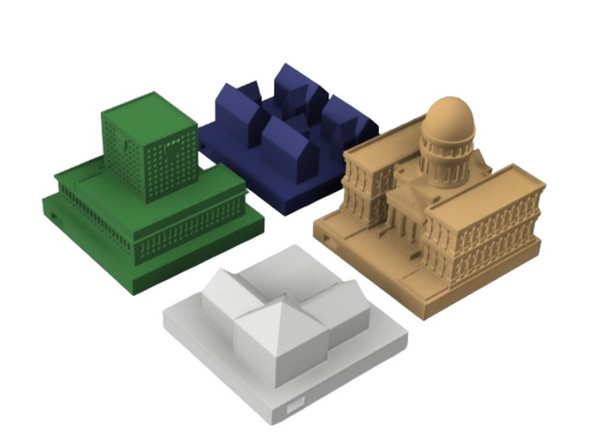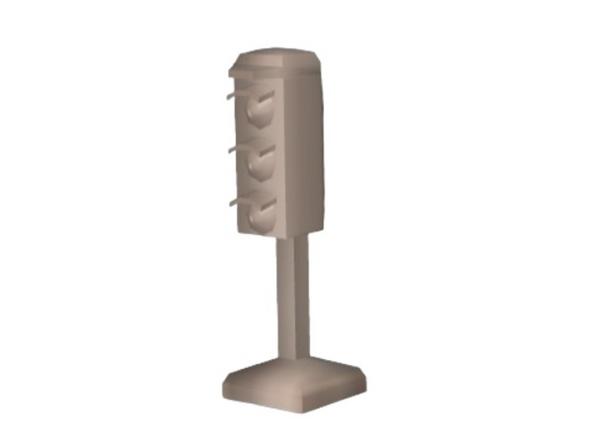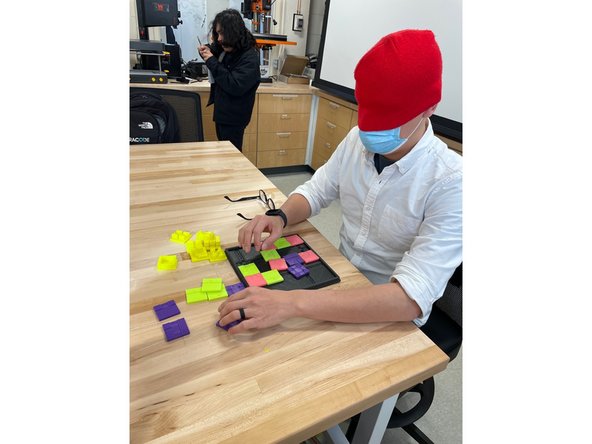Introduction
The tactile puzzle is an inclusive and creative solution to help sighted and non-sighted children, ideally 6-10 years old, work together and better understand how one another interacts with the world around them. This puzzle is most beneficial for visually-impaired children since it improves their spatial awareness of an area that would be typically difficult for them to visualize.
Non-sighted children can only experience what they can touch. They may think a car is only a seat and a door handle when sighted children know a car has multiple doors, wheels, windows, etc. With this in mind, a tactile puzzle about a road map can help children understand where and how they may cross the road, how roads are laid out, and any buildings or important objects -- such as stoplights and lamp posts -- that surround the roads. The puzzle is meant to combine education with recreation, and this is accomplished by making the puzzle a game.
The guide itself is to meant to provide directions for how many tiles should be printed and how users can play the tactile puzzle game.
Tools
Parts
No parts specified.
-
-
Print out as many base pieces as needed; the more pieces, the more complex the puzzle becomes. The original prototype had 25 base pieces printed at a size of 66 x 66 mm.
-
The amount of base pieces printed must have a corresponding amount of top pieces. Tiles can be scaled accordingly.
-
Types of pieces in original puzzle design: 4-way intersection, 3-way intersection, curved roads, and straight roads.
-
-
-
The amount and type of top piece must correspond with the amount and type of base piece.
-
All 66 x 66 mm pieces should be printed with a 4 x 8 mm hole already placed at diagonal and opposite sides of the tile. Tiles can be scaled accordingly.
-
-
-
This varies based on the quantity and type of tile piece you have. 4-way intersections have a square peg for the stoplights. Straight roads have a circular peg for lamps.
-
Other decor pieces include a collection of houses, a police station, a school, and a tree with its accompanied planter.
-
Buildings were printed at a size of about 66 x 66 mm.
-
Stoplights were printed parallel to the print bed at around 53 mm on the x-axis and 16 mm on the y-axis.
-
Lamps were printed parallel to the print bed at around 17 mm on the x-axis and 61 mm on the y-axis.
-
Except for the stoplights and lamps, all other decor can fit anywhere on the created board made from the base tiles.
-
-
-
This is what connects the base and top tile pieces together, allowing for the pieces to stay in place with enough friction that the pieces won't slide off one another.
-
If the hole is too big for the magnets, use super glue or another adhesive to secure it.
-
In the original prototype, 20 x 5 x 2 mm magnets were used and secured with glue.
-
-
-
One player, sighted or non-sighted, creates their desired roadmap with any combination of pieces as they want. They can use all or less than the total amount of available base pieces.
-
-
-
The opposing player should match the pieces by touch only. The player that assembled the base layout will time them to see how fast their opponent can finish the puzzle.
-
If one player is sighted, they should obstruct their vision with an eye covering or keep their eyes closed.
-
-
-
Once the opposing player is finished and their time is recorded, the roles switch! Player with the fastest time wins!
-
Time of completion accounts for how long it takes for the tiles to be sliced and printed correctly in a 3D printer of your choice. Actual execution of the game, both rounds, should take about 15 to 20 minutes.
Time of completion accounts for how long it takes for the tiles to be sliced and printed correctly in a 3D printer of your choice. Actual execution of the game, both rounds, should take about 15 to 20 minutes.











